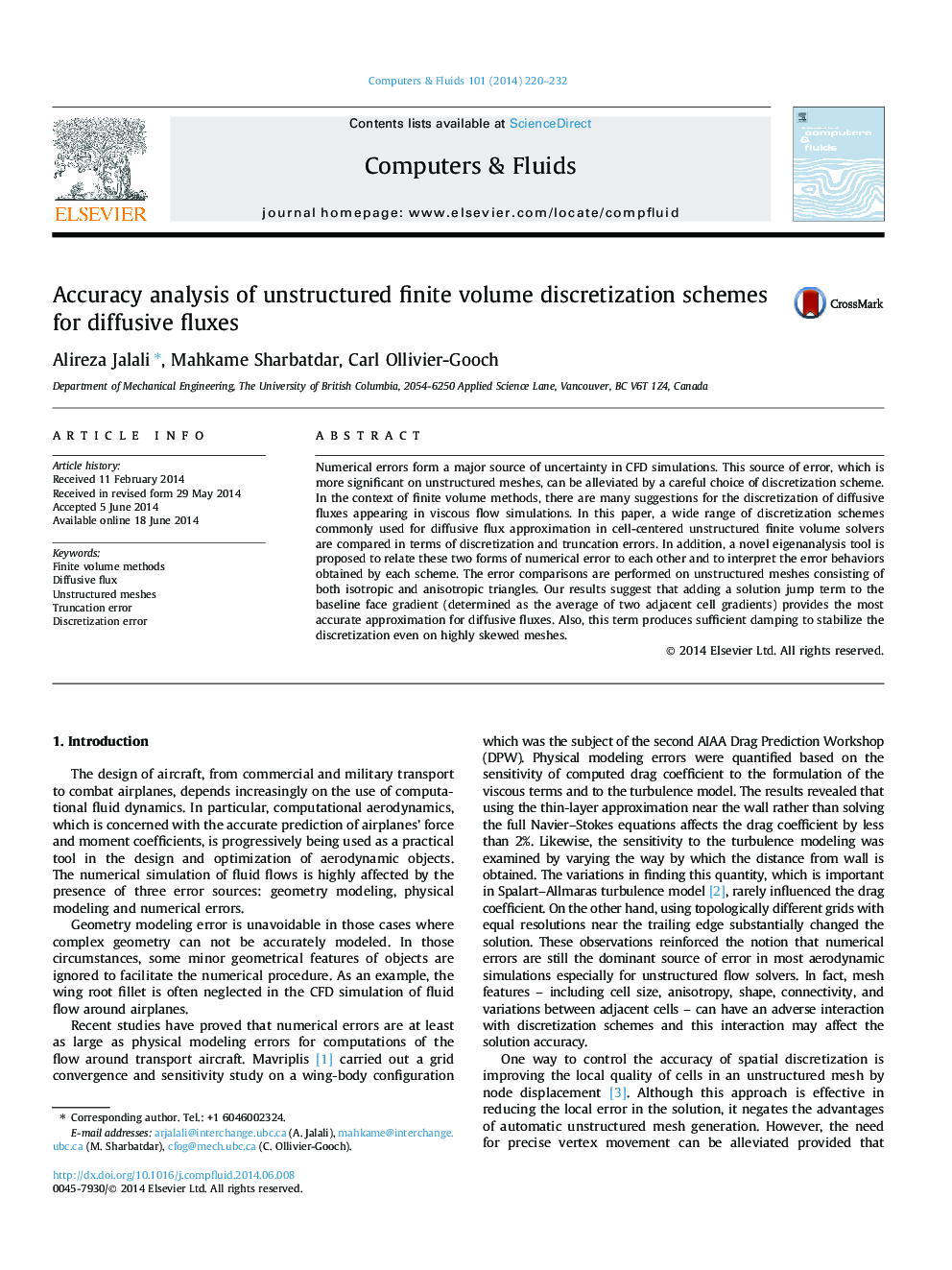| Article ID | Journal | Published Year | Pages | File Type |
|---|---|---|---|---|
| 768143 | Computers & Fluids | 2014 | 13 Pages |
•We compare the error forms for a range of diffusive flux discretization schemes.•Eigendecomposition is used to correlate the truncation and discretization errors.•Eigendecomposition gives us an insight to interpret error behaviors.
Numerical errors form a major source of uncertainty in CFD simulations. This source of error, which is more significant on unstructured meshes, can be alleviated by a careful choice of discretization scheme. In the context of finite volume methods, there are many suggestions for the discretization of diffusive fluxes appearing in viscous flow simulations. In this paper, a wide range of discretization schemes commonly used for diffusive flux approximation in cell-centered unstructured finite volume solvers are compared in terms of discretization and truncation errors. In addition, a novel eigenanalysis tool is proposed to relate these two forms of numerical error to each other and to interpret the error behaviors obtained by each scheme. The error comparisons are performed on unstructured meshes consisting of both isotropic and anisotropic triangles. Our results suggest that adding a solution jump term to the baseline face gradient (determined as the average of two adjacent cell gradients) provides the most accurate approximation for diffusive fluxes. Also, this term produces sufficient damping to stabilize the discretization even on highly skewed meshes.
